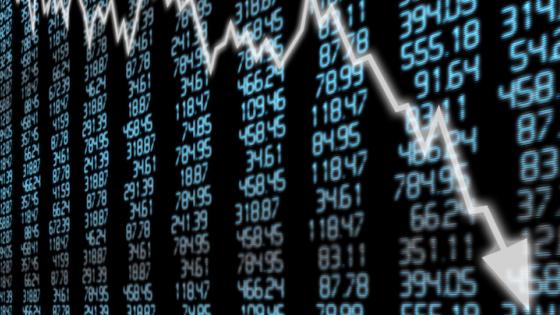
The October 2018 stock market in a historical context
In this post, Jon Danielsson asks whether last month's stock market crash was as bad as some are making out.
Search the site

In this post, Jon Danielsson asks whether last month's stock market crash was as bad as some are making out.
The stock market (Standard & Poor’s 500) in October 2018 fell by -7.2%. (I use log returns).
The Financial Times thought it was pretty bad, calling it ‘Red October’ and giving us detailed explanations as to causes. Some of which seem to be quite silly.
So how bad was the October crash?
Take the entire history of S&P 500 returns, which I have from 1929. That means 1,090 months, of which 68 have returns smaller than or equal to October. That is, unconditionally we expect October’s performance every 16 months.
A -7.2% monthly drop in the stock market doesn’t seem that bad in a historical context.
For more context, Figure 1 shows the monthly returns, with the blue line highlighting October’s return.
Figure 1 Monthly S&P 500

The biggest stock market crash in history happened in October 1987, and that is also the month when the market fell badly in 1929. Does that make October an especially dangerous month? No.
Figure 2 How often a particular month has the worst performance in a year

Historically, October is the second worst month of the year, after August, but the differences don’t seem to be statistically significant. What is interesting is that the annual worst is never in December.
Another way to look at the market outcomes in October is volatility. I use the daily returns to calculate monthly realised volatility, annualised for good measure.
Figure 3 Monthly S&P 500 volatility

October’s volatility, while high, is not all that bad. Throughout the entire sample, 160 months have volatility that is higher than or equal to October’s. That makes it unconditionally the highest volatility every seven months.
How likely is it that the market will go up in November? The sample has 1,090 months, of which 444 have negative returns. If I look at the following month, we have 443, and they have 192 negative returns and 250 positive.
Unconditionally, if the market goes down in a month, we are more likely to see it go up the following month.
Is that statistically significant?
Yes, the probability of getting 250 or more out of 444 is 0.0036, so it is significant.
There are a lot of caveats to this analysis. If corrected for expected returns, inflation and dividends, the picture might change. Similarly, the magnitude matters.
October 2018 generated a lot of headlines – the Financial Times again: “US stocks head for worst month since the financial crisis”.
At the end of the day, it wasn’t all that bad – a market outcome we can expect one month out of every 16, and volatility expected every seven months.
It seems to have been an attack by a toothless dragon.